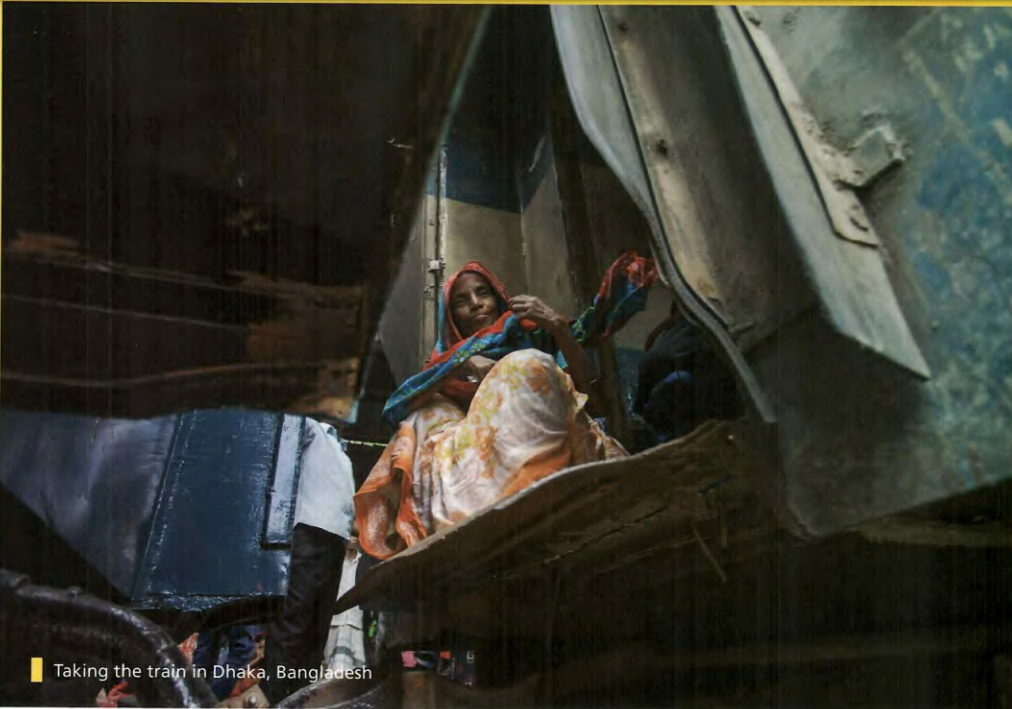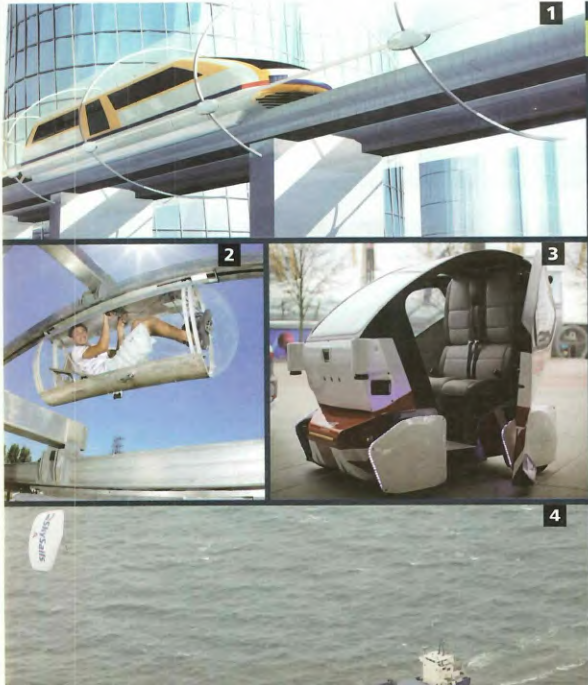
Unit 3a
Số câu hỏi: 29 câuSố mã đề: 1 đềThời gian: 1 giờ
191,284 lượt xem 14,712 lượt làm bài
Xem trước nội dung:

Why isn't the woman inside the train?
TRANSPORT SOLUTIONS
A.
BMW, Volvo, General Motors and Google are all currently working on driverless cars. Some driverless cars use solar energy, so they are good for the environment. They are also safer because the computer controls the speed and they can’t go faster than the speed limit.
B.
This monorail in New Zealand is a new solution for commuters in traffic jams during the rush hour. The passenger sits in a pod and can cycle over people’s heads. Google has already invested over $1 million in the idea.
C.
At sea, large container ships travel thousands of kilometers and use a lot of fuel. Now, a German company is testing huge kites on these ships. The wind pushes the kite and this moves the ship. It reduces the fuel costs and lowers carbon emissions.
D.
In the future, the Hyperloop could be a common type of public transport. It’s a long tube with no air inside, and passengers sit inside pods which travel at 1,200 kilometers per hour. There are already plans for the first Hyperloop between the city centres of San Francisco and Los Angeles. The distance is around 600 kilometers and it would only take 30 minutes.
Match the paragraphs (A-D) with the photos (1-4).

Cột 1
Cột 2
Which types of transport (A-D) do you think the sentences describe? Some sentences describe more than one type:
It moves over people's heads.
A
B
C
D
It's a faster way to commute.
A
B
C
D
It needs human energy.
A
B
C
D
It uses energy from the wind or the sun.
A
B
C
D
It makes travel cheaper.
A
B
C
D
It isn't for long distances.
A
B
C
D
Find these compound nouns in the article. Match the nouns with the definitions (1--7).
carbon emissions
city centres
container ships
fuel costs
rush hour
speed limit
traffic jam
– the maximum speed you can legally drive.
– a long line of vehicles moving slowly on the road.
– the time in the day when lots of people travel to/from work.
– the money you spend on petrol or diesel in transport.
– the amount of CO₂ that a type of transport produces.
– the middle of cities.
– transport for moving products around the world.
Listen to a short conversation between two colleagues at work.
Eight thirty is the time for traffic.
My bicycle is than your car in the rush hour!
I travel than you.
They're for the environment.
They're better but they're also expensive.
A new electric car is the expensive type of car.
The bus takes over an hour.
Complete this report about a transport survey. Write the correct comparative or superlative form of the adjectives.
Report on local transport
For commuting and daytime travel in our town, the (popular) form of transport is the bus because it's (cheap) than going by car or taxi. However, some people in the survey want (good) cycle paths because the bus is (slow) than a bicycle in the rush hour. Everyone said that parking in the town centre is the (big) problem, so people don’t often use their cars. As a result, taxis are (popular) than private cars in the evenings, even though taxis are the (expensive) type of transport.
